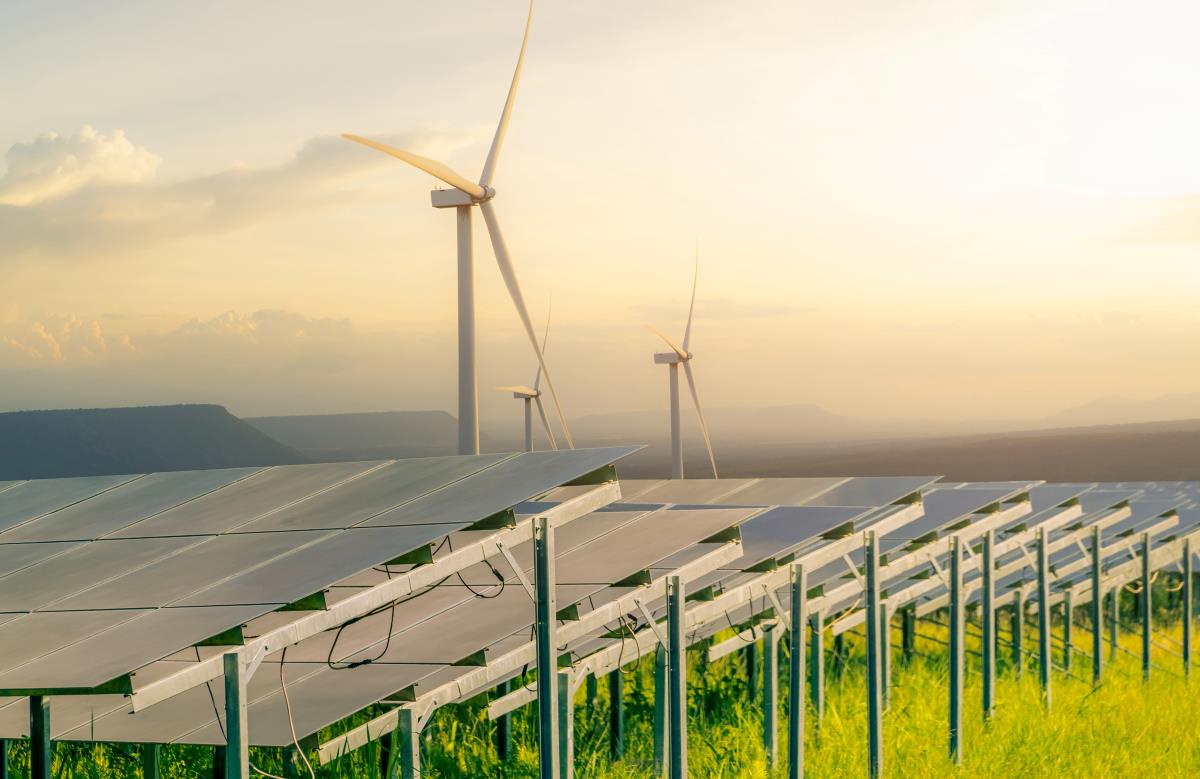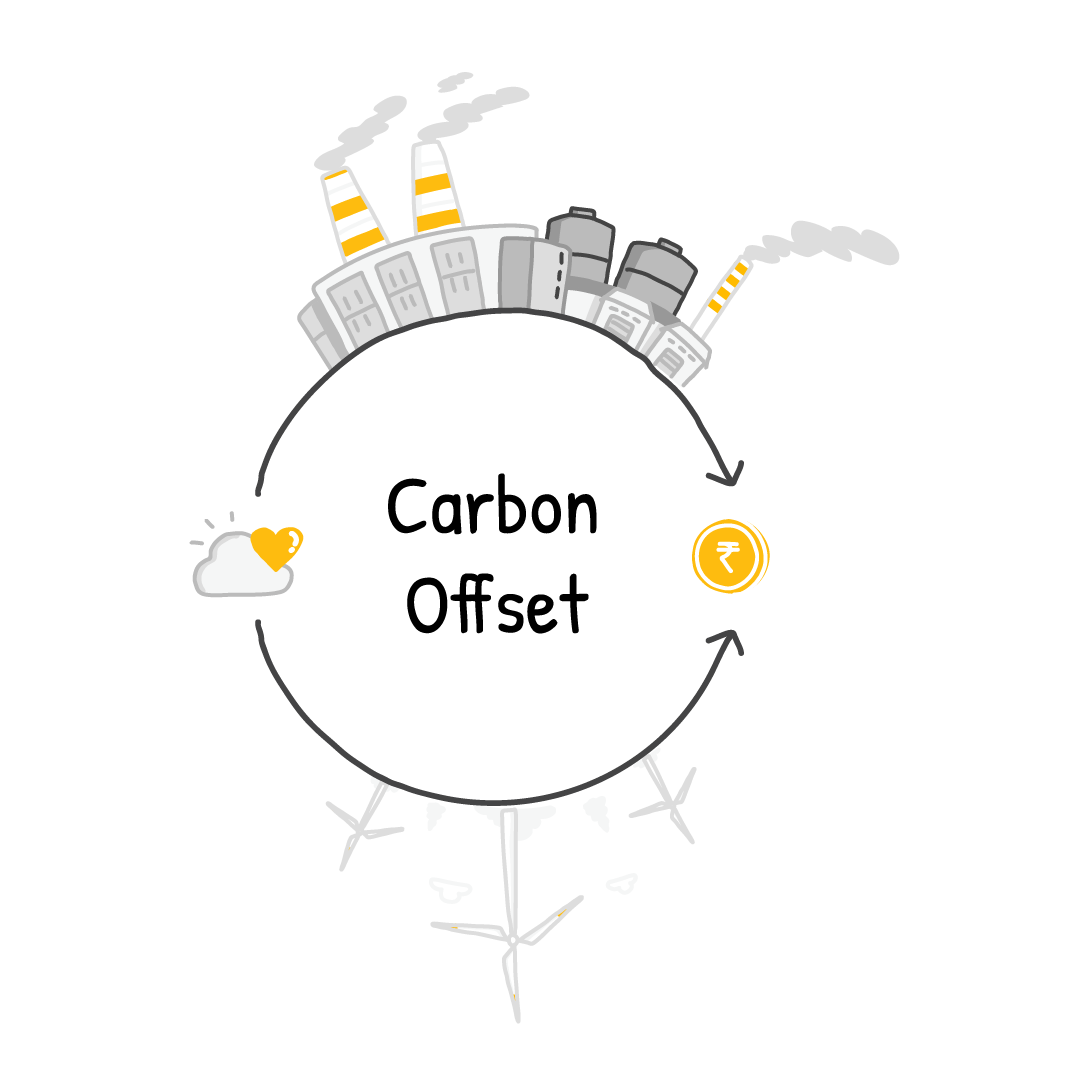7 Crore+ Customers

Affordable Premium

7 Crore+ Customers

Affordable Premium



The levels of carbon dioxide in our atmosphere are now higher than ever in human history. The need of the hour is to reduce the amount of greenhouse gases in the atmosphere to control serious issues such as Global Warming and Climate Change.
In this article, we will discuss one such strategy - Carbon Offsets.
Carbon offset comes from the most basic idea: You give something, you get something or Quid Pro Quo.
With this idea, if you emit X amount of CO2 into the atmosphere in one location, you can offset it by investing in a carbon-reducing activity in a different location to compensate for part or all your carbon footprint.
Carbon offsetting is used to compensate for your emissions by funding an equivalent carbon dioxide saving elsewhere.
An organization takes actions like planting trees, building wind farms, solar power plants, etc., to compensate for their carbon emissions. If they compensate enough to offset their carbon footprint, they effectively become carbon neutral.
Carbon offsets fall under two broad categories:
Carbon emissions avoidance is a technique which results in future emissions being avoided or reduced. Organizations take up some common types of emissions avoidance such as renewable energy projects, forest conservation or management or carbon capture and storage. These methods are further explained below.
Carbon removal projects physically remove existing carbon from the atmosphere. This can be through a natural process or through technological innovations. For e.g., afforestation and reforestation are natural methods of carbon removal.
Direct air capture (DAC) is a chemical process of removing carbon from the atmosphere directly. Large fans draw air into the DAC plant. Different chemical processes such as Electro swing and Solid/Liquid DAC are used to re-release air into the atmosphere devoid of CO2.

Carbon Offsetting works in 4 major steps:
Organizations and individuals pursue carbon offsetting voluntarily or to comply with regulations.
Individuals can make donations or purchase an offset credit. This money promotes carbon storage or reduction, such as planting/saving trees, developing wind or solar farms, etc. You can do this to help offset your carbon emissions.
Carbon Offsets allow businesses that can't immediately reduce their emissions to balance things out by buying emissions reductions somewhere else. Businesses focus on becoming carbon-neutral or achieving net-zero emissions through carbon offsetting.
Some examples of carbon offsetting projects are the following:
There are many organizations that monetize carbon removal/reduction techniques through 'carbon credits'. It is important for individuals and corporations who truly want to make a positive impact on the environment to verify these carbon-offsetting institutions.
This helps in accurate reporting, data tracking and transparency that will not only build credibility, but also help authorities and agencies better their climate actions and plans.
There are several quality markers to look out for when verifying successful carbon offsetting, such as:
Carbon offsetting is possible because climate change is a non-localized problem. Greenhouse gases mix throughout the atmosphere, so reducing them anywhere contributes to overall climate protection. While in theory carbon offsets seem like a golden idea, their efficiency remains in question.
Most offsets available on the market don't reliably reduce emissions. A carbon offset requires to have the feature of 'additionality'. The project must accurately measure the amount of CO2 being kept out of the atmosphere. This process requires transparency and well-documented standards and protocols to verify that the project is doing everything it claims.
Although carbon offsets have appealing benefits, it is difficult to verify their environmental benefits. Yet, they are now the backbone of environmental policies of many of the biggest polluters of the planet.
Offsets are not the only answer to climate change. It seems like an easy solution but to have actual impact, more real and hard work is required.
So, what can be done?
If you really want to make a difference,
Carbon offsetting can help reduce carbon emissions and mitigate the effects of climate change, but it can't solve the problem entirely on its own.